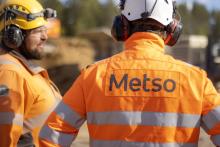
The report also analyses construction aggregate price increases at the state level from 2019 to 2022.
- New Jersey has fared the worst of any state, with aggregate price increases of 41.1% during the study period—nearly 10 percentage points higher than the next-fastest increasing state of Utah (32.6%).
- Notably, aggregate prices among top production states such as Texas, California, and Ohio have grown less than 10% since 2019, below the national average of 15.8%.
- Just four states—Idaho, Delaware, Louisiana, and North Dakota—have experienced declines since 2019.
Construction aggregates include sand, gravel, crushed stone, and other materials used for drainage and foundations. They are also an ingredient in composite materials such as asphalt and concrete. These important uses give aggregates a critical role in the construction industry, impacting the cost of other building supplies, as well as the larger economy:
While increasing equipment and labour costs influence construction aggregate prices, local availability and transportation are critical drivers. Due to their weight and the large volumes required for projects, aggregates are most cost-effective when sourced close to their point of use through a local aggregate supplier.
All 50 states produce sand and gravel, and only two produce crushed stone. However, variations in permitting regulations and community appetite for new quarry projects can complicate sourcing aggregates in certain areas. These shortages can increase costs through greater competition for supply or higher shipping expenses. As a result, the vast majority of states have seen large increases in the price of construction aggregates in recent years, and these price increases in construction aggregates are directly impacting building costs.
For a complete breakdown of production and price figures of both crushed stone and sand & gravel for all 50 states, check out Twisted Nail's full report.










